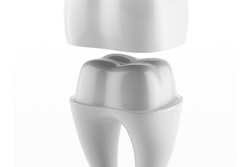
During a restorative treatment, the two most-used isolation methods are a rubber dam or a cotton roll. No matter which you use, the results of a new Cochrane Library review might have you changing how you practice.
While use of a rubber dam is considered the "standard of care" during restorative procedures, researchers from China wanted to discover if using a rubber dam affected the success and longevity of dental restorations (Cochrane Database of Systematic Reviews, September 20, 2016).
"We found some very low-quality evidence, from single studies, suggesting that rubber dam usage in dental direct restorative treatments may lead to a lower failure rate of the restorations," wrote the authors, led by Dr. Yan Wang and colleagues from Sichuan University and the University of Hong Kong.
Isolation methods
Controlling microbes and moisture are key elements of a successful restorative procedure. But previous studies have shown conflicting results as to whether isolation via cotton roll or rubber dam has a lower failure rate. So the authors wanted to see if different isolation methods affected the performance of restorations.
“There is some evidence to suggest that the use of a rubber dam may increase the survival time of dental restorations compared to the use of cotton rolls as an isolation method.”
The review included four studies with a total of more than 1,000 patients, most of whom were children. All the patients had different types of restorative treatments that required "effective moisture control to reduce failure rates," including fissure sealing, resin or composite fillings at the gum margin, and proximal atraumatic restorative treatment in primary molars. All of the included studies compared the use of rubber dam and cotton rolls as two different isolation methods.
The authors found that in patients receiving composite restorative treatment of noncarious cervical lesions, restorations in the rubber dam isolation group "had a significantly higher survival rate" compared with the cotton roll isolation group at six months. However, they considered the evidence as low quality.
In a study of children undergoing proximal atraumatic restorative treatment in primary molars, the review authors reported that the rubber dam group also had a lower risk of failure at two years. However, they also considered this very low-quality evidence.
High risk of bias
The rubber dam isolation method led to a higher survival rate for restorations, according to the review authors, but they expressed several concerns. They noted that each of the included studies had a high risk of bias. One trial was excluded from their review because of inconsistencies in the presented data.
The authors also reported that none of the included studies reported adverse effects, the direct cost of the treatment, or the level of patient acceptance and satisfaction. They also found no evidence evaluating the effects of rubber dam usage on the quality of the restorations.
"There is some evidence to suggest that the use of a rubber dam may increase the survival time of dental restorations compared to the use of cotton rolls as an isolation method," the authors concluded.



















